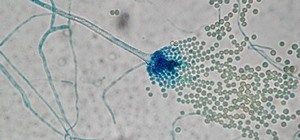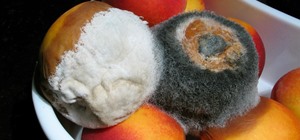Marijuana is legal to use for medical purposes in 28 states and the District of Columbia, but the quick development of this new industry could have left some regulation issues in the lurch.
Recently, a California man died of a fungal infection after using marijuana to help alleviate the side effects of his cancer chemotherapy. The patient developed a rare and incurable fungal infection after using aerosolized marijuana that he inhaled as a mist, and that started the search for the infectious agent.
A research team investigated the tragedy by analyzing 20 different samples of dried cannabis from Northern California dispensaries for the presence of potentially dangerous pathogens. Their findings, published online in the journal Clinical Microbiology and Infection, showed that medical marijuana carries infectious bacteria and fungi that can pose a potential life-threatening risk to cancer patients.

These patients aren't your run of the mill pot users. These severely immune-compromised patients "can't have cut flowers in their room," said lead researcher George Thompson III, associate professor of clinical medicine at University of California, Davis, in a UC Davis Health press release. "They're told to not garden. They're told to really scrub their produce before they eat it."
Patients are also told to avoid foods like raw vegetable sprouts, undercooked eggs, fresh salsa, and berries because they can contain infectious organisms, but patients haven't been warned about medical marijuana, even though it's basically dead plant material and may also contain infectious organisms, according to the study authors.
Decaying Plants Are Decaying Plants
Fungus loves to feed and grow on decaying organic material, and dead marijuana leaves are no different. Dr. Thompson and his team found 20 different types of fungus in the pot samples they analyzed, including three—Cryptococcus, Mucor, and Aspergillus—known to infect people with compromised immune systems, like those receiving chemotherapy for cancer.
Mucormycosis, the infection caused by Mucor fungi, was the cancer patient's cause of death. It kills about 50% of those infected who have compromised immune systems. The usual routes of infection with this type of mold are by inhalation of spores, or direct entry of spores through a wound.
The analysis also discovered many bacterial pathogens. These bacteria were Escherichia coli, Klebsiella pneumoniae, Pseudomonas aeruginosa, Pseudomonas fluorescens, Pseudomonas putida, Acinetobacter baumannii, and Stenotrophomonas maltophilia.
The researchers noted that these fungi and bacteria, if isolated from a patient, would probably be attributed to infections they developed while in the hospital because the pathogens are known to be the sources of hospital-acquired infections. But since the organisms were identified in the marijuana samples, that makes it a possible source of the infection that killed the cancer patient.
Inhaled pot smoke can be as hot as 140ºF (60°C), suggesting bacteria in the smoke may be killed, and that the smoke is sterile. But organisms have been cultured from smoke, even smoke that has been filtered through water.
So, the question remains—did the patient die from a fungal infection he got from inhaling medical marijuana? The organisms certainly may be present; smoking or inhaling provides a route to deposit fungus or bacteria into the body; and patients on chemotherapy and other cancer patients have deficient immune systems and are less capable of fighting off organisms the rest of us can and do on a daily basis.
The answer is that marijuana is a possible and probable source of the infection, but not a proven source. The next question then becomes—how can marijuana be more safely used by these patients?
The study authors advised against patients using inhaled forms of medical marijuana. They suggested that consuming pot in baked goods may be the best option, since cooking temperatures would probably kill the pathogens and the digestive tract can stop their entry into the body.

Federal law may prohibit the use of marijuana for any purpose, but that hasn't stopped more than half the states from legalizing it, either for personal or medical use—and it sounds like doctors are in favor of its use, as well. A 2013 survey reported that 76% of the physicians polled, who came from 72 different countries, favored use of marijuana for medicinal purposes.
Under the Marihuana for Medical Purposes Regulations that became effective in 2014, Canada now treats marijuana like other narcotics used for medical purposes. That means, it is produced according to good manufacturing standards and tested for quality. The US is slowly catching up; SC Labs in California is issuing certificates of analysis for commercial medical marijuana in that state, with hopes of expanding.
Cancer patients are becoming dependent upon it to stop the vomiting and nausea of chemotherapy, and this population of people are trusting cannabis, as they would any other medication. It's time that the medical pot industry adopted some quality and purity standards to establish trust and legitimize their intent to provide a legitimate medical product.
Just updated your iPhone? You'll find new emoji, enhanced security, podcast transcripts, Apple Cash virtual numbers, and other useful features. There are even new additions hidden within Safari. Find out what's new and changed on your iPhone with the iOS 17.4 update.



























Be the First to Comment
Share Your Thoughts